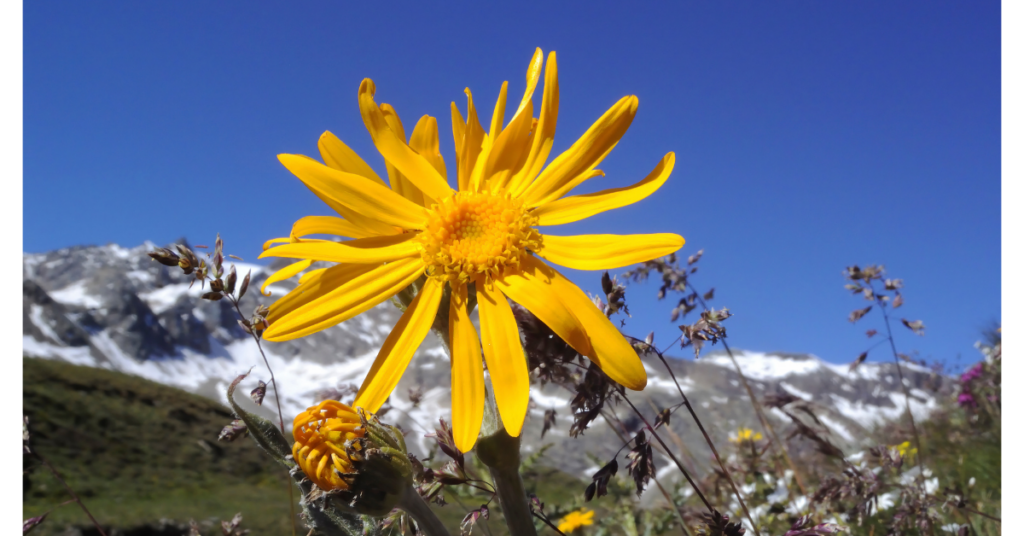Arnica – Homeopathic Remedy
Arnica (Arnica montana)
Arnica is also known as the ‘fallkraut’ (fall herb / fall grass), alluding to its main use as an accident remedy. It is, therefore, an essential addition to any first aid kit, taken either internally or applied topically (for bruises and swellings).
Other names: Leopard’s bane, sneezewort, and mountain tobacco.
Description and the places it grows in
Bright yellow flowers with long green leaves. Arnica grows in mountainous and woodland regions all over the world.
Parts used
Fresh parts of the flowering plant.
Uses
Homeopaths may prescribe this remedy for:
Injury / trauma following an accident, operation, childbirth, etc., displaying the following symptoms: Bruising, swelling, pain, bleeding, and shock.
Shock following bad news or other traumatic event.
Sore / sprained muscles.
Gout or rheumatic joints displaying the following symptoms: Pain, heat, and inflammation.
Whopping cough (for children).
Bedwetting (for children) displaying the following symptoms: Nightmares.
People requiring this remedy will feel worse: With heat, with touch, with too much rest, with continual movement.
People requiring this remedy will feel better: Lying down with legs slightly raised.
Arnica-type people can sometimes be a serious, morbid bunch, often focusing on the worst case scenario. However, they tend to ignore any signs of poor health, even refusing to see a doctor when they are quite obviously unwell, believing that they can manage fine on their own.
The information given on this site about homeopathic remedies is just a general overview. Classical homeopathy takes all the patient’s symptoms into account and prescribes upon the “Totality of Symptoms”, thus finding the precise remedy that matches the patient’s symptoms perfectly.
Here, at The CMA we recommend that anyone interested in learning more about homeopathy and the fascinating remedies that homeopaths use should take an introduction course to homeopathy, which will help you to understand how to become a good home first-aid prescriber. This is ideal for ‘acute symptoms’. However, if you want to learn more – with a view even to becoming a professional homeopath, who is educated highly enough to be able to treat chronic conditions, you’ll need to be prepared to spend many years learning this vast and fascinating topic – along with anatomy, physiology and pathology, history of medicine, homeopathic philosophy, and much more. You’ll find both kinds of courses here on this site – head to our section on Find a CMA Member and search under CMA Registered Training Schools.

